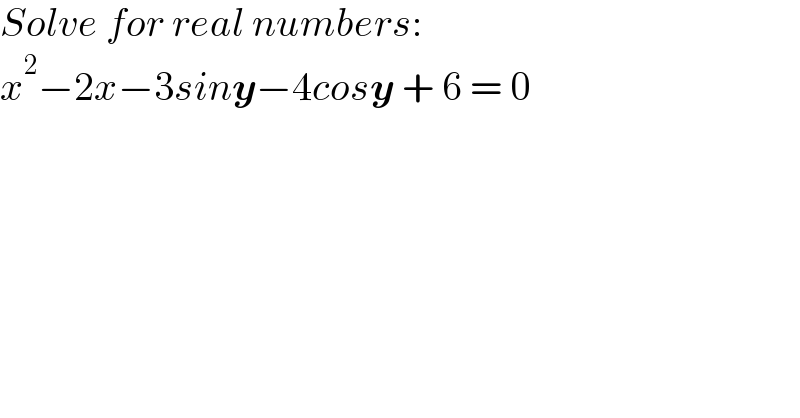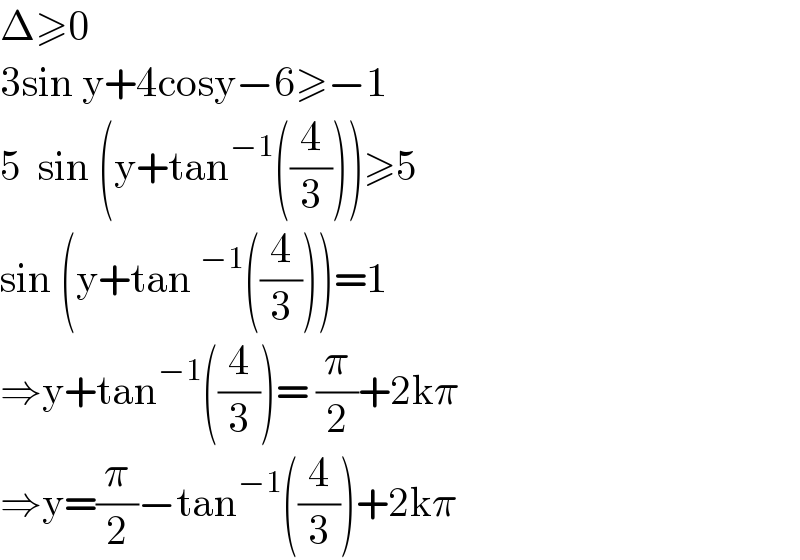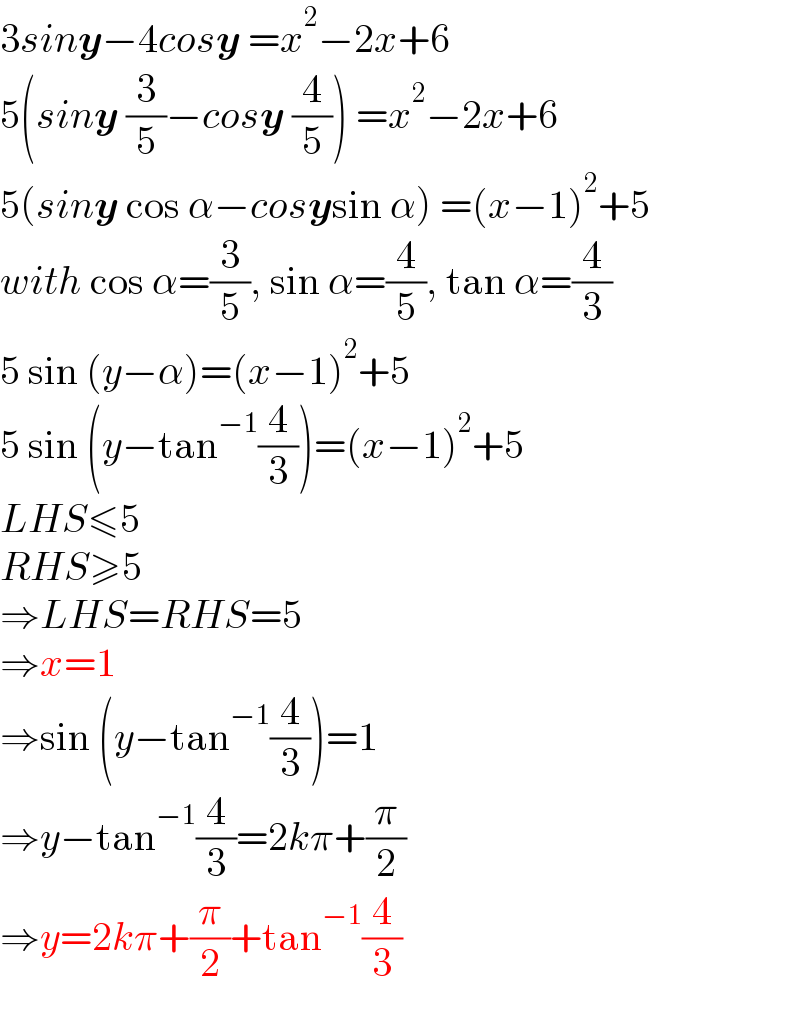
Question and Answers Forum
Question Number 149478 by mathdanisur last updated on 05/Aug/21

Commented by iloveisrael last updated on 06/Aug/21

Commented by mathdanisur last updated on 06/Aug/21

Answered by mr W last updated on 05/Aug/21

Commented by mathdanisur last updated on 05/Aug/21

Commented by peter frank last updated on 05/Aug/21

Commented by mr W last updated on 05/Aug/21

Commented by peter frank last updated on 05/Aug/21

Commented by Tawa11 last updated on 05/Aug/21

Answered by MJS_new last updated on 05/Aug/21

Commented by mathdanisur last updated on 05/Aug/21

